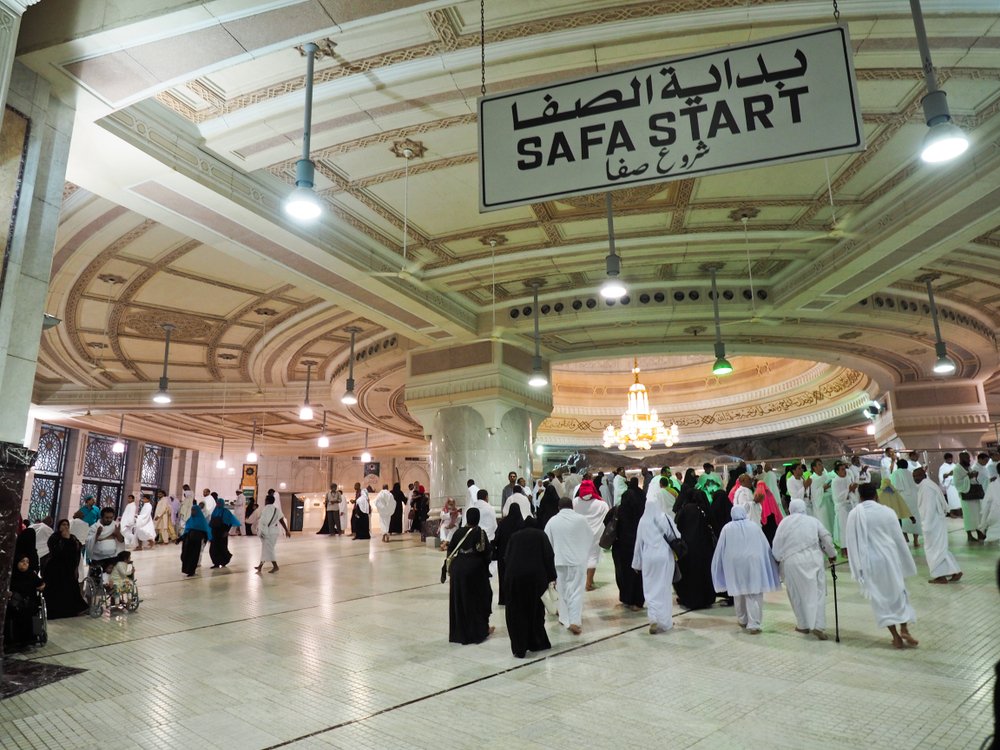The Prophet of Islam is reported to have said that a Muslim should not embark on a pilgrimage or pious visit to any mosque other than the Holy Sanctuary of Mecca, the Prophet’s Mosque in Medina, and the al-Aqsa Mosque in Jerusalem. This statement is considered to be one of the pillars of Islamic belief, and it is believed that visiting these three cities can bring about spiritual enrichment for any true believer.
The holy cities are viewed as blessed places by Muslims, who strive to visit them at least once in their lifetime, if possible. Each city has its own unique spiritual character and serves as a reminder of the faith’s history and its sacred connection with God. Different religious traditions and cultures are also associated with the holy cities, making them truly unique places of worship. For some Muslims, visiting one or more of these cities can be a life-changing experience that helps to strengthen their faith and deepen their understanding of Islam as a whole.
In order to grasp the significance of these holy cities to the Muslim imagination, it is important to understand the history and traditions associated with them.
For example, the city of Mecca is considered to be the birthplace of Prophet Muhammad, while Medina is known as the first Muslim city in which he established his mosque. The al-Aqsa Mosque in Jerusalem holds a special place in Islamic tradition.
Mecca:
The city of Mecca has been venerated as a holy center since time immemorial. In the pre-Islamic period it was the site of various shrines, but it was during the Islamic period that its importance as a holy city was solidified. The Kaaba, a cube-shaped structure in the center of Mecca, is the most sacred site in Islam and is believed to be constructed by Abraham and Ishmael.
Muslims all around the world turn their faces towards the Kaaba during their daily prayers and make an effort to visit the city at least once in their lifetime for a pilgrimage known as the Hajj. During this pilgrimage, millions of Muslims from all over the world gather to perform rituals that were practiced by Prophet Abraham and his family in remembrance of God’s greatness.
This pilgrimage is seen as a way for Muslims to purify their souls and focus on the worship of God. Additionally, Mecca is home to numerous other sacred sites such as the Maqam Ibrahim, a shrine that marks the site where Prophet Abraham is believed to have stood while constructing the Kaaba.
The city also holds significance for Muslims due to its role in Islamic history – it was here that the Prophet Muhammad was born, and it was here that the first revelations of the Quran were received. For this reason, Mecca is considered to be one of the most important Islamic holy cities in the world.
Medina:
The second most important holy city in Islam is Medina, located in modern-day Saudi Arabia. Unlike Mecca, Medina was not a significant site before the advent of Islam – it was here that Prophet Muhammad migrated from Mecca to escape persecution and establish the first Muslim community. As such, this city holds special significance for Muslims, who venerate it for its role in the establishment of Islam.
The city is home to a number of important mosques, such as the Masjid al-Nabawi (the Prophet’s Mosque), which marks the site where Muhammad gave his last sermon and was later buried. Additionally, Medina is home to several other religious sites including Quba Mosque, the first mosque to be built in the world, and Mount Uhud, where the Battle of Uhud between Muslims and Meccans took place. Because of its connection to early Muslim history, Medina is seen as an important holy city for followers of Islam around the world.
Medina remained the political capital of the Islamic Empire during the reign of the four caliphs who succeeded the Prophet. With the outbreak of civil war and the eventual division of the Islamic world, Medina’s importance diminished. Nevertheless, it remains an important holy city for Muslims all over the world, who venerate its role in early Islamic history.
The final mosque that enjoys special status is the Qiblatyn Mosque, which literally means the mosque of two directions. Unlike most mosques, which face towards Mecca, this mosque faces both to Mecca and also to Jerusalem. This direction is of special significance for Muslims, as it marks the moment when the Prophet received a revelation from God that instructed him to change the direction of prayer from Jerusalem to Mecca. For this reason, it enjoys a special status among many Muslims who venerate it for its symbolism.
Conclusion:
These two cities – Mecca and Medina – are the two holiest cities in Islam and are held in high regard by Muslims all around the world. The pilgrimage to these cities is an important show of faith for many followers, and visiting these sites is a way to strengthen one’s relationship with God. For this reason, Mecca and Medina will continue to be revered as holy cities for generations to come.

